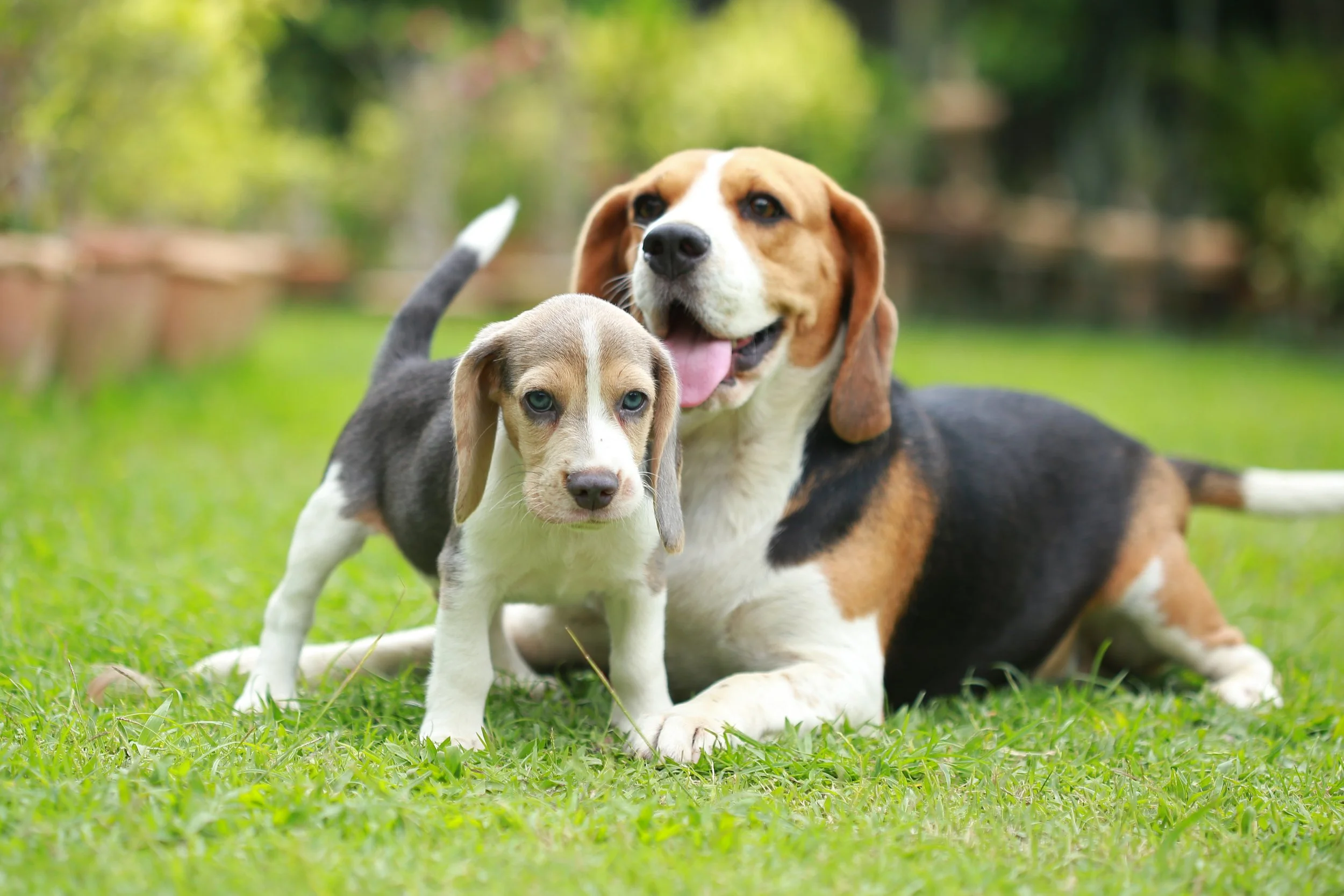5 Dog Training Mistakes That Create Lifelong Problems (And How to Avoid Them)
Bringing a dog into your family is one of the most rewarding decisions you’ll ever make. But here’s the truth: small mistakes in early training can create big problems later. Many owners don’t realise that habits formed in the first weeks and months can shape behaviour for years to come.
In this blog, I’ll walk you through the five most common training mistakes I see — and what to do instead, so your dog grows into a confident, well-mannered companion.
Beagle Mother with Puppy
1. Skipping Socialisation During the Critical Period
The mistake: Many puppies miss out on safe, positive exposure between 8–16 weeks of age. Puppies who aren’t gradually introduced to new people, dogs, environments, and sounds are more likely to grow into fearful or reactive adults.
The fix: Prioritise daily socialisation experiences, but keep them safe and positive. Start small — one new sound, person, or surface each day — and always pair it with rewards.
2. Using Punishment Instead of Positive Reinforcement
The mistake: Yelling, leash-jerks, or harsh corrections might stop a behaviour in the moment, but they damage trust and can increase anxiety or aggression.
The fix: Focus on teaching what you do want. Reward calm behaviour, redirect unwanted habits, and use management strategies (like baby gates or crates) to prevent mistakes while your dog learns.
3. Inconsistent Rules and Boundaries
The mistake: Allowing a puppy on the sofa “just once” or sometimes ignoring pulling on the lead creates confusion. Dogs thrive on clarity, and inconsistency leads to frustration and unwanted habits.
The fix: Set house rules from day one and stick to them. Make sure all family members follow the same plan so your dog learns quickly and confidently.
4. Not Practising in Real-Life Situations
The mistake: Dogs may respond beautifully at home but fall apart in the park or around distractions. Training in only one environment creates “context-specific” learning that doesn’t transfer to the real world.
The fix: Practise gradually in different environments — the garden, the pavement, the park. Increase distractions slowly so your dog builds reliability everywhere.
5. Ignoring Early Signs of Behaviour Problems
The mistake: Hoping your dog will “grow out of it” often means small issues (like nipping, barking, or separation distress) snowball into lifelong problems.
The fix: Address challenges early. Seek professional help if behaviours escalate or persist — early intervention saves time, stress, and money.
Final Thoughts
Training your dog doesn’t have to be overwhelming, but avoiding these five common mistakes makes all the difference. With consistency, patience, and positive methods, you’ll set your dog up for success from the start.
If you’re struggling with one of these issues, you don’t have to figure it out alone.
👉 [Book your Behavioural Assessment today — £30 off for new clients]
Your dog deserves the best start, and together, we can prevent small problems from becoming lifelong struggles.
